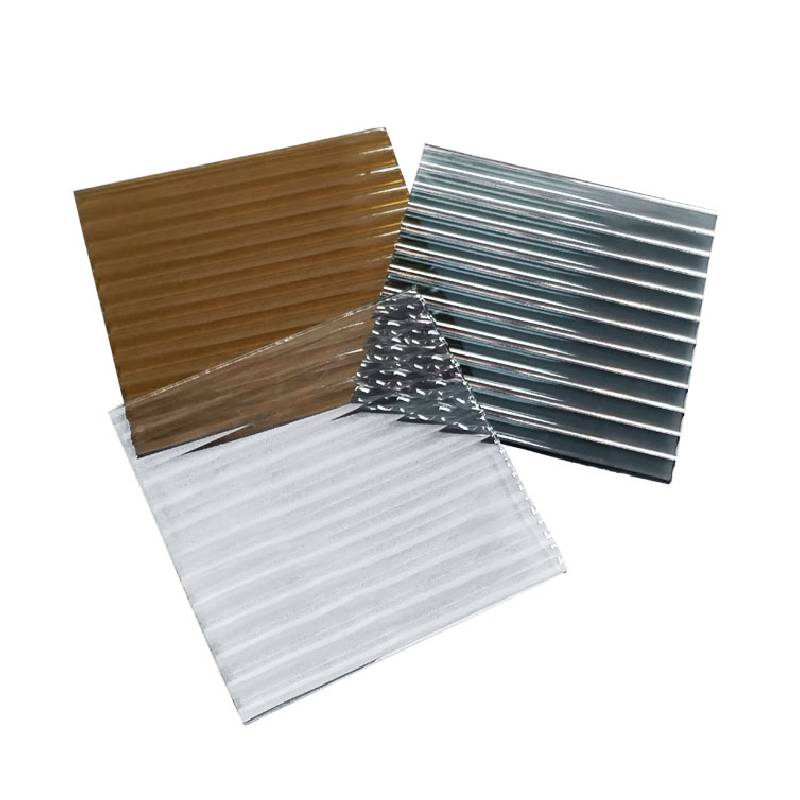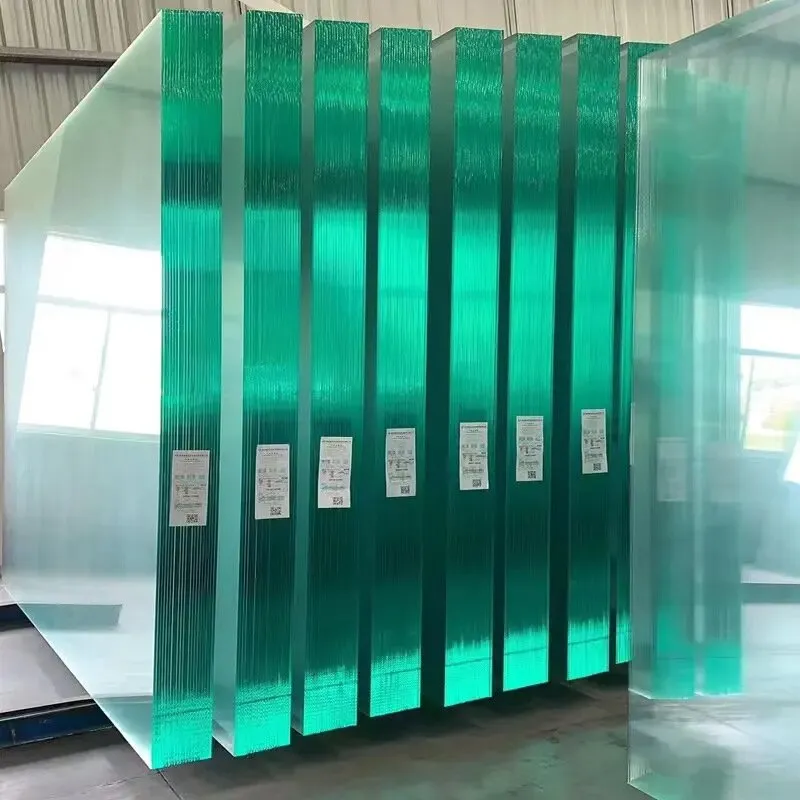Clear glass types are integral in numerous industries, offering diverse functional and aesthetic choices that cater to a variety of needs. With a rich history and ever-evolving applications, understanding the nuances of different clear glass types can significantly enhance product selection and application success.

Clear glass, known for its transparency, can be broadly categorized into standard annealed glass, low-iron glass, and extra-clear glass. Standard annealed glass holds the majority in daily usage due to its cost-effectiveness and versatility. It undergoes a gradual cooling process to relieve internal stresses, making it suitable for an array of applications, from windows to picture frames. However, its Achilles' heel lies in its tendency to break into sharp shards upon impact, thus prompting advancements in safety glass.
Low-iron glass, often referred to as ‘optically clear glass,’ has surged in popularity, especially where clarity and visual purity are paramount. With reduced iron content, this glass offers a near-perfect transparency devoid of the green tint associated with standard clear glass. Its application is popular in architecture and interior design, particularly for spaces intending to maximize natural light or feature unobstructed views.

Extra-clear glass elevates clarity even further. This ultra-transparent glass type promises up to 91% light transmission, making it favorable in solar applications and high-end projects where aesthetics and maximum light effectiveness are crucial. Often subjected to rigorous strength-enhancement processes, extra-clear glass offers improved durability alongside its superior visual characteristics, making it a preferred choice in luxury buildings and precision device screens.
clear glass types
Exploring the expert insights, each glass variant's composition plays a significant role in its properties and applications. For instance, the glass’ raw material selection, such as sand purity, directly affects its transparency and quality. Manufacturers implementing enhanced production technologies can produce glass types with improved optical and mechanical properties, catering to demanding architectural and technological functions.
In the market, the demand for clear glass types is informed by consumer experience and feedback, economist analyses predict a steady growth in the use of low-iron and extra-clear glass. Their contribution to energy efficiency and aesthetic enhancement in architectural designs provides undeniable long-term value, particularly in sustainable building projects, where natural illumination is optimized to conserve energy.
Trust in these products also stems from their certifications and compliance with international safety and quality standards. Major manufacturers conduct extensive testing to ensure their glass withstands environmental stressors and human use, thus bolstering customer confidence in their investments.
In conclusion, clear glass types offer a distinct combination of transparency, aesthetic appeal, and functional adaptability. By considering individual project requirements, such as required clarity, safety implications, and environmental impact, experts can choose the most appropriate glass type. This not only enhances the visual and functional outcomes but also aligns with modern demands for sustainability and energy efficiency, ensuring that clear glass remains at the forefront of innovative architectural and industrial design.
 Afrikaans
Afrikaans  Albanian
Albanian  Amharic
Amharic  Arabic
Arabic  Armenian
Armenian  Azerbaijani
Azerbaijani  Basque
Basque  Belarusian
Belarusian  Bengali
Bengali  Bosnian
Bosnian  Bulgarian
Bulgarian  Catalan
Catalan  Cebuano
Cebuano  Corsican
Corsican  Croatian
Croatian  Czech
Czech  Danish
Danish  Dutch
Dutch  English
English  Esperanto
Esperanto  Estonian
Estonian  Finnish
Finnish  French
French  Frisian
Frisian  Galician
Galician  Georgian
Georgian  German
German  Greek
Greek  Gujarati
Gujarati  Haitian Creole
Haitian Creole  hausa
hausa  hawaiian
hawaiian  Hebrew
Hebrew  Hindi
Hindi  Miao
Miao  Hungarian
Hungarian  Icelandic
Icelandic  igbo
igbo  Indonesian
Indonesian  irish
irish  Italian
Italian  Japanese
Japanese  Javanese
Javanese  Kannada
Kannada  kazakh
kazakh  Khmer
Khmer  Rwandese
Rwandese  Korean
Korean  Kurdish
Kurdish  Kyrgyz
Kyrgyz  Lao
Lao  Latin
Latin  Latvian
Latvian  Lithuanian
Lithuanian  Luxembourgish
Luxembourgish  Macedonian
Macedonian  Malgashi
Malgashi  Malay
Malay  Malayalam
Malayalam  Maltese
Maltese  Maori
Maori  Marathi
Marathi  Mongolian
Mongolian  Myanmar
Myanmar  Nepali
Nepali  Norwegian
Norwegian  Norwegian
Norwegian  Occitan
Occitan  Pashto
Pashto  Persian
Persian  Polish
Polish  Portuguese
Portuguese  Punjabi
Punjabi  Romanian
Romanian  Russian
Russian  Samoan
Samoan  Scottish Gaelic
Scottish Gaelic  Serbian
Serbian  Sesotho
Sesotho  Shona
Shona  Sindhi
Sindhi  Sinhala
Sinhala  Slovak
Slovak  Slovenian
Slovenian  Somali
Somali  Spanish
Spanish  Sundanese
Sundanese  Swahili
Swahili  Swedish
Swedish  Tagalog
Tagalog  Tajik
Tajik  Tamil
Tamil  Tatar
Tatar  Telugu
Telugu  Thai
Thai  Turkish
Turkish  Turkmen
Turkmen  Ukrainian
Ukrainian  Urdu
Urdu  Uighur
Uighur  Uzbek
Uzbek  Vietnamese
Vietnamese  Welsh
Welsh  Bantu
Bantu  Yiddish
Yiddish  Yoruba
Yoruba  Zulu
Zulu 


